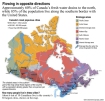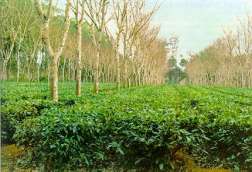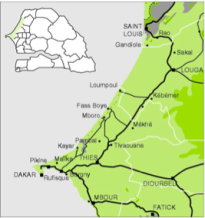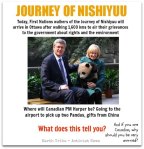The power of language, that is understanding and speaking the local language, has never been more evident to me since my arrival in Senegal. This is not only because a language is a gateway into a new culture and way of life, but the backbone to understanding the origin of the language and its significance.
For me, there are two clear stories of the power of language and how it can change your experience entirely.
The first being my progression from “Ca va?” to “Saleemalekum”. When I first arrived to Senegal, I found that the general greeting included many “Ca vas” and as result guided me to say “Ca va” to those I passed along the streets. At first this was okay as almost everybody responded to my “Ca va” greeting. However as I began to learn more about the language, the obvious greeting was Saleemalekum, which basically means Peace be upon you. Upon mastering this greeting, my world began to change as it began to open the hearts of many Senegalese who assumed that I was just another toubab (stranger) coming to visit Senegal. Interestingly, the word for toubab means stranger and thus even those who are West African (like my good friend Blandine) but cannot speak Wolof are described as toubabs. The greeting of Saleemalekum somehow seems to change the entire dynamic of the interaction between locals and I, clearly demonstrating the power of language.
For the second story, I am currently exchanging English lessons, the language of supposed power and opportunity (maybe ignorance), for Wolof (Oolof) lessons with my Senegalese brother Malick and the entire family. Friday, Malick and I were spending the afternoon going over everything from “How is your family?” (Anna we ker gi?) to Head and Shoulders (tanke, loho, nop) to “Where are you going?” (Foi dem?). Throughout the afternoon many of our family members and other came and went but each time Malick encouraged me to ask some sort of question to them. I know that I sound absolutely ridiculous saying these words in Wolof but I have learned that it is not about how correct you can be, rather the fact that you are taking the time to learn and understand their language of origin. This fact is clearly evident in my families’ faces of joy and pride as I try to ask in broken Wolof- how did you sleep last night (nelow nga bou bakh dem?). As I continue with my Wolof progression (maybe by the end of this I’ll be able to hold a conversation), I understand more and more the power of language and how it can open the culture to you.
This is especially evident in the significances of certain words. For example, the word dem means peace and ultimately is a question of whether you are going somewhere with peace. Moreover, the Wolof word for home (not house) resembles significantly to the French word for heart (Coeur). Malick attempted to explain to me that this was because your home and your family are very important to you and thus close to your heart. Now these are just an example, and I’m sure that there are many more, but it demonstrates the importance of language.
Overall, I did not come here to visit, I came here to live and experience the real Senegal. One of the best ways to do this is to learn and speak the local language.
As such, I challenge you to learn the introductory words to a new language before you travel. It will help you better understand the culture you are visiting, show respect for their culture/language, and bargain like a true local.







